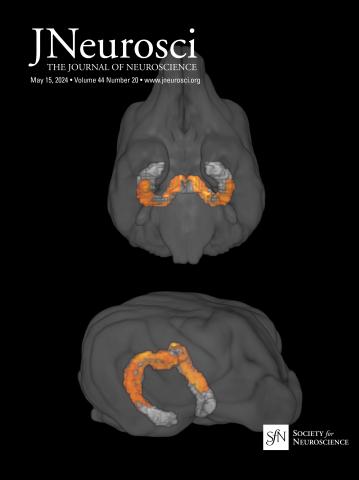青少年早期睡眠脑电图纺锤波活动与丘脑体积的联合遗传力。
IF 4.4
2区 医学
Q1 NEUROSCIENCES
引用次数: 0
摘要
睡眠纺锤波是在非快速眼动(NREM)睡眠期间短暂的有节奏的活动爆发,是由丘脑皮质网络通过丘脑和皮层之间复杂的相互作用产生的。新兴研究揭示了睡眠纺锤波在认知功能、记忆巩固和整体大脑健康中的作用。本研究采用行为遗传学方法,对青少年女性和男性进行研究,研究了共同遗传和环境因素对睡眠纺锤波(通过高密度睡眠脑电图测量)和丘脑体积(通过MRI测量)的影响程度。我们发现丘脑体积与睡眠纺锤波振幅和密度之间有很强的相关性。贝叶斯结构方程模型估计,在后脑区,遗传因素约占睡眠纺轴活动和丘脑体积之间协方差的一半。我们的研究结果表明,遗传因素在塑造丘脑皮质网络的结构和功能完整性方面发挥作用,这对理解这些过程如何促进神经发育结果具有重要意义。睡眠纺锤波是丘脑产生的振荡活动,对认知功能和大脑健康至关重要。本研究探讨了遗传和环境因素对青少年睡眠纺锤波和丘脑体积的共同影响。我们的研究结果表明,影响丘脑体积和纺锤体振幅的遗传因素在脑后区有显著的重叠。鉴于睡眠纺锤体活动在涉及丘脑皮质系统的几种脑部疾病中发生改变,这项工作不仅增强了我们对睡眠脑电图神经解剖学基础的生物学现象的理解,而且为开发针对神经发育障碍的针对性干预提供了重要见解。本文章由计算机程序翻译,如有差异,请以英文原文为准。
Joint Heritability of Sleep EEG Spindle Activity and Thalamic Volume in Early Adolescence.
Sleep spindles, transient bursts of rhythmic activity during non-rapid eye movement (NREM) sleep, are generated by the thalamocortical network through an intricate interplay between the thalamus and the cortex. Emerging research has shed light on the role of sleep spindles in cognitive function, memory consolidation, and overall brain health. Using a behavioral genetics approach in female and male adolescent humans, this study examined the degree to which sleep spindles (measured via high-density sleep EEG) and thalamic volume (measured via MRI) are driven by common genetic and environmental factors. Here we show a strong correlation between thalamic volume and sleep spindle amplitude and density. Bayesian structural equation modelling estimated that over posterior regions genetic factors accounted for approximately half of the covariance between sleep spindle activity and thalamic volume. Our findings demonstrate that genetic factors play a role in shaping the structural and functional integrity of the thalamocortical network, with implications for understanding how these processes contribute to neurodevelopmental outcomes.Significance statement Sleep spindles, oscillatory activity generated in the thalamus, are crucial for cognitive functions and brain health. This study investigated the joint genetic and environmental influences on sleep spindles and thalamic volume in adolescents. Our findings suggest a significant overlap in genetic factors influencing thalamic volume and spindle amplitude over posterior brain regions. Given that sleep spindle activity is altered in several brain disorders involving the thalamocortical system, this work not only enhances our understanding of the biological phenomena underlying the neuroanatomical substrates of the sleep EEG but also offers crucial insights for developing targeted interventions in neurodevelopmental disorders.
求助全文
通过发布文献求助,成功后即可免费获取论文全文。
去求助
来源期刊

Journal of Neuroscience
医学-神经科学
CiteScore
9.30
自引率
3.80%
发文量
1164
审稿时长
12 months
期刊介绍:
JNeurosci (ISSN 0270-6474) is an official journal of the Society for Neuroscience. It is published weekly by the Society, fifty weeks a year, one volume a year. JNeurosci publishes papers on a broad range of topics of general interest to those working on the nervous system. Authors now have an Open Choice option for their published articles
 求助内容:
求助内容: 应助结果提醒方式:
应助结果提醒方式:


